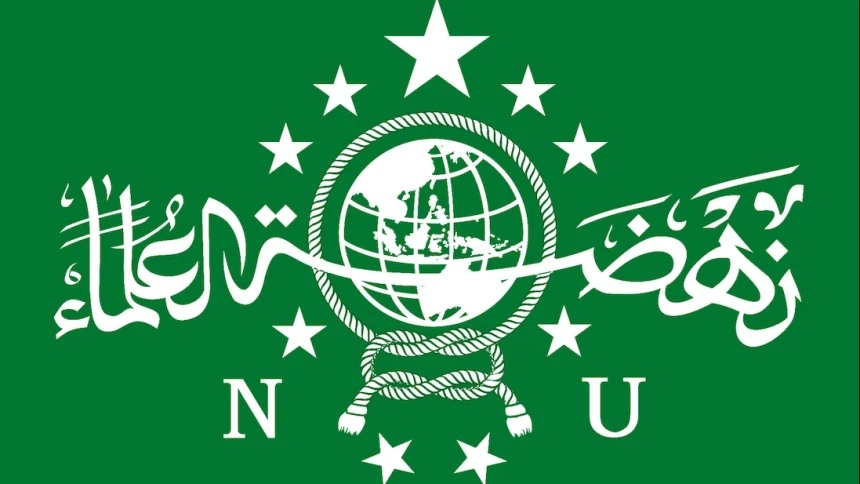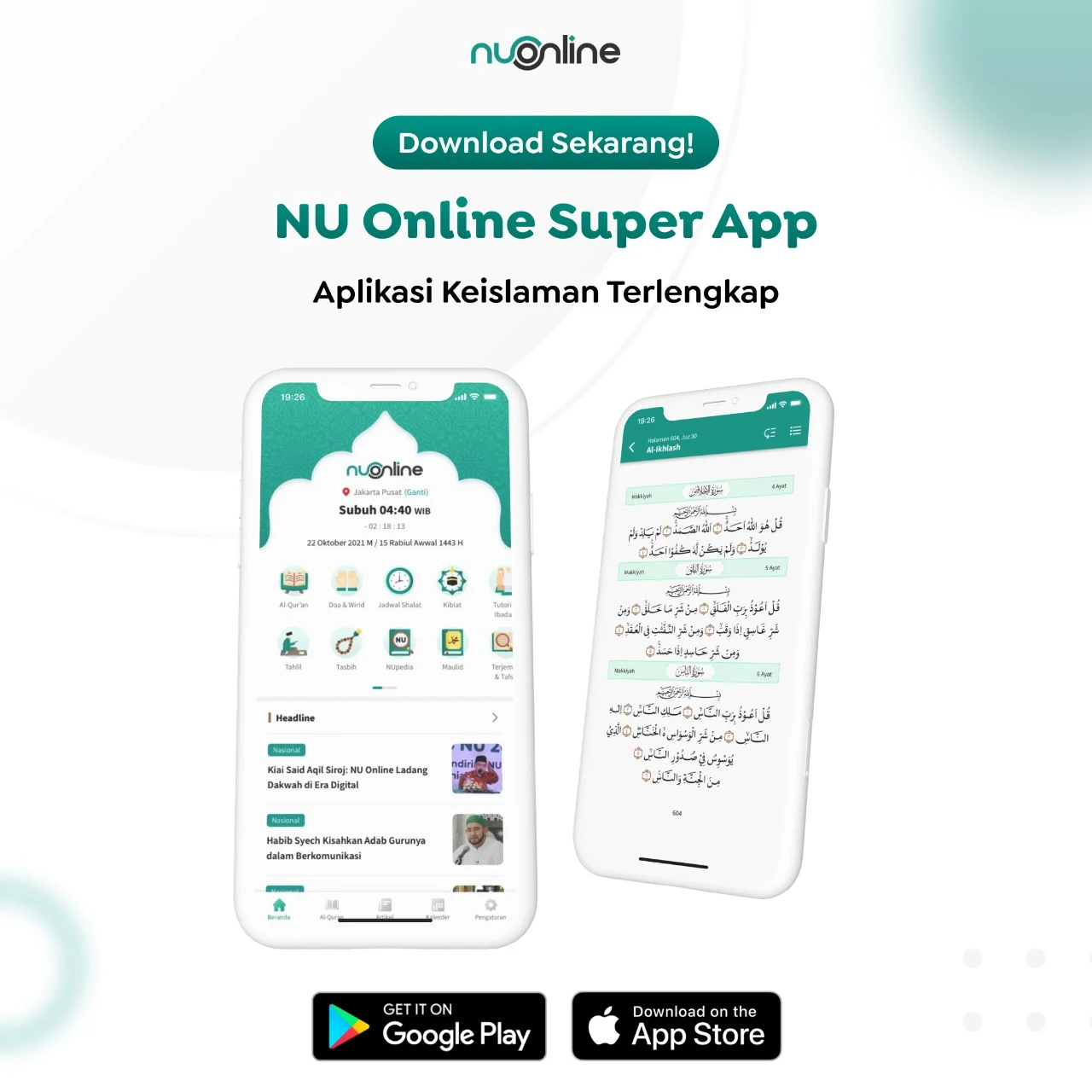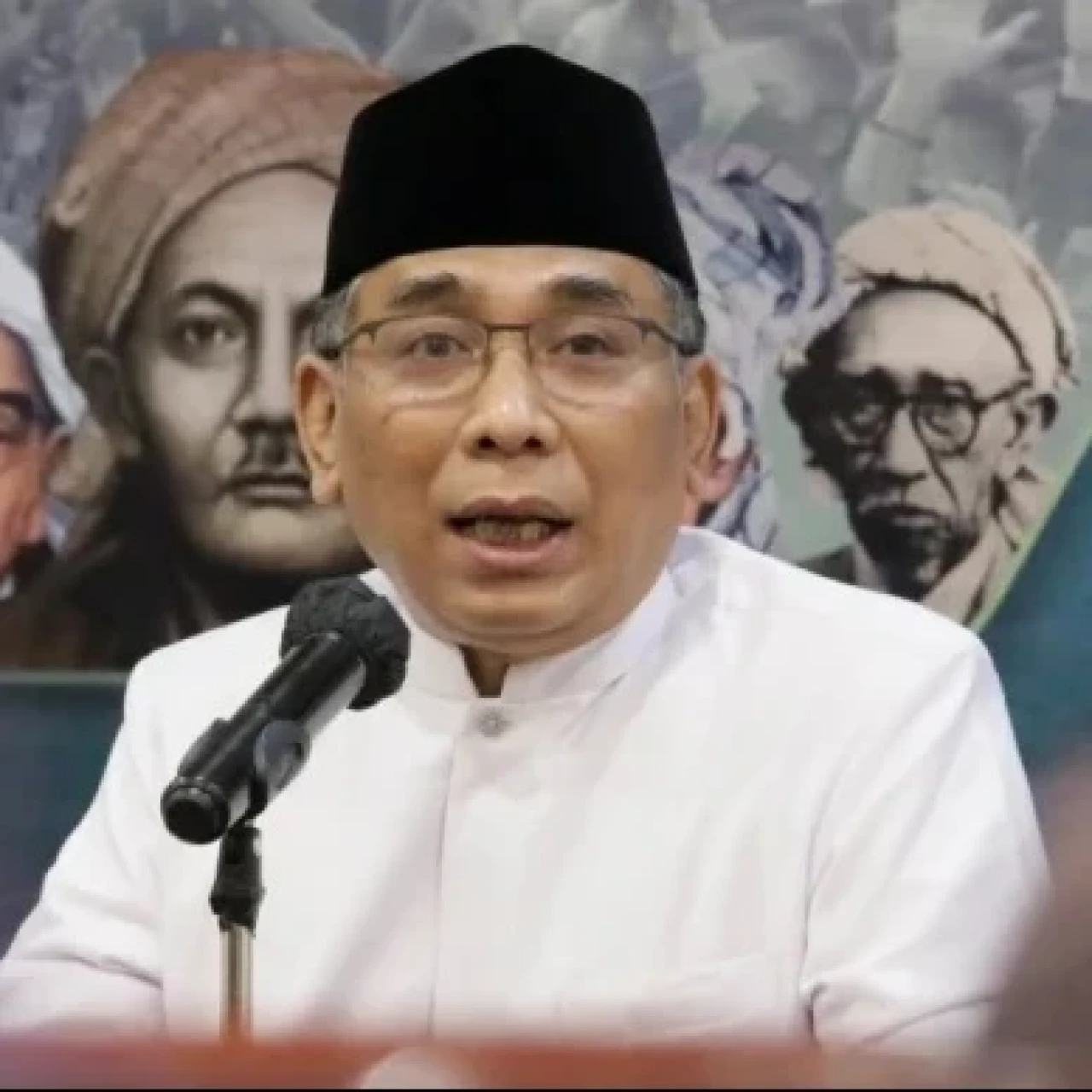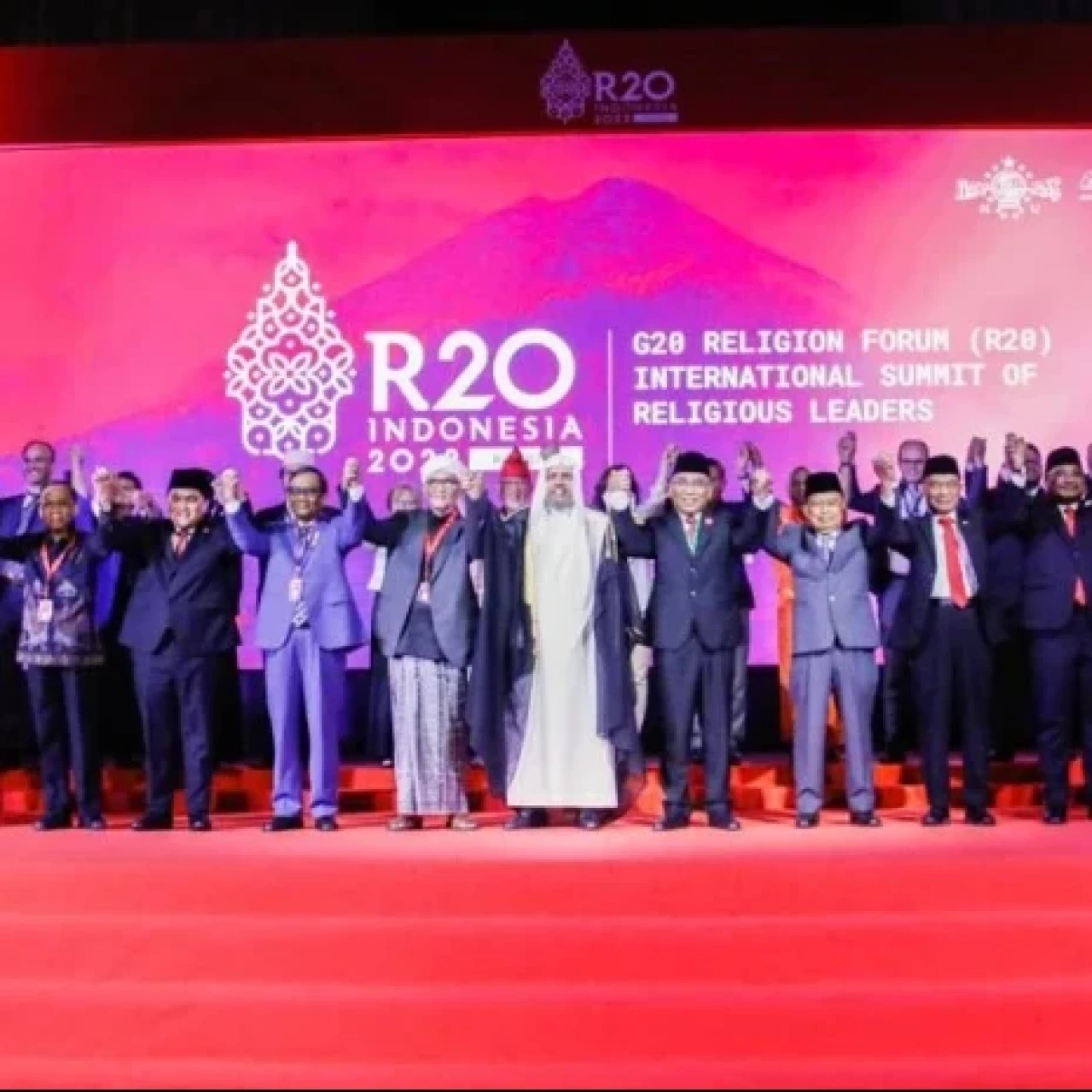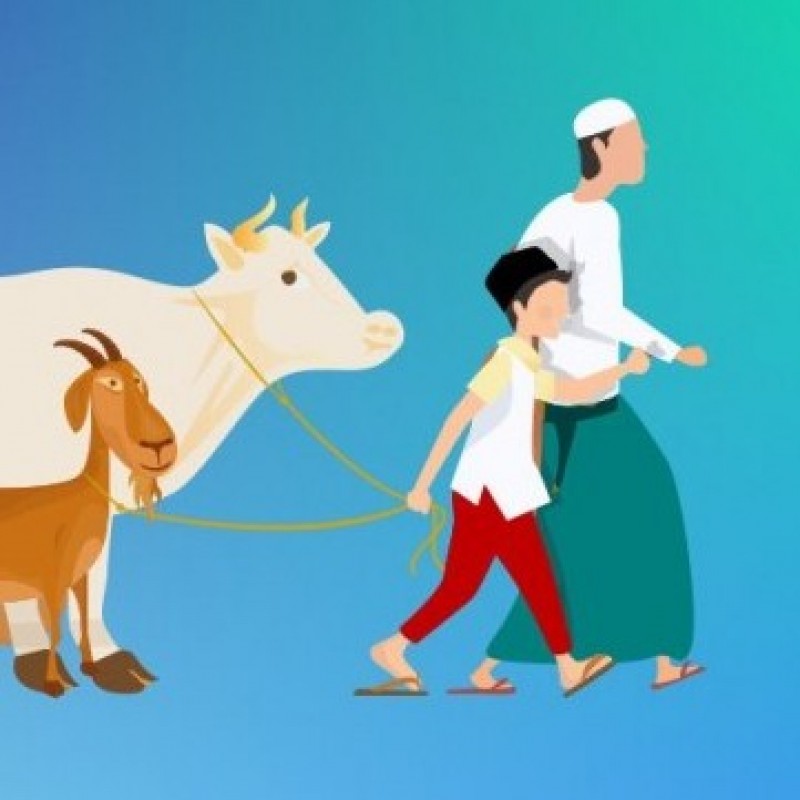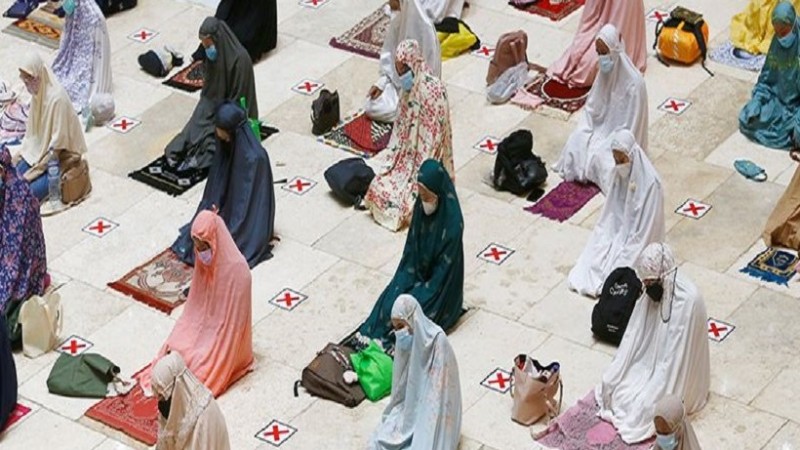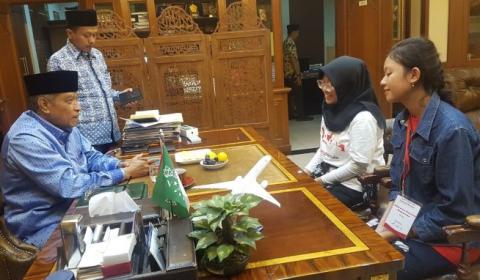Anti-Semitism in Indonesia: A Simplification of a Multi-Faced Islam
NU Online · Selasa, 8 Mei 2007 | 04:57 WIB
A. Introduction
Fritz Schulze published an article in Orientierung Journal (2007) about anti-Semitism in Indonesia entitled Antisemitismus in Indonesien- Die Idee der jüdischen Weltverschwörung im indonesischen politischen und religiösen Diskurs. The article is aimed at showing that anti-Semitism paradoxically exists in the most populous Muslim country with hardly any Jewish inhabitants. (Schulze, 2007). The way Schulze explores sources and publications on the subject is quite appropriate. By looking at the publications, ranging from statements in mass-media, articles and books, it seems that the reality of what Schulze concluded in his article cannot be denied. Moreover, the existence of anti-Semitism, according to Schulze, is not only disseminated by small groups, on the contrary, it is propagated by several organizations in whose campaign several Indonesian Muslim intellectuals have taken part. (Schulze 2007).
By reading the article of Schulze, in short, one may have the impression that Indonesia with its Muslim majority population is in a continuous discourse on anti-Semitism. At the same time, it creates the image that Indonesian Islam cannot be separated from widespread anti-Semitism in the Middle East which leads to an image that there is only one model of Islam in Indonesia.<>
The picture Schulze paints, nevertheless, only portrays one side of the story of Islam in Indonesia. The present article tries to bring nuance to this story, to depict the multi-facedness of Indonesian Islam. This will be illustrated by exploring local values and cultural wisdom of Indonesian Islam as it is represented by the Pesantren community and disseminated by Nahdlatul Ulama, the biggest Muslim organization in Indonesia. It is not directed to the political discourse within Indonesia in the frame of influence of the political tension between the Arab world and Israel, on the contrary, it is aimed at showing that anti-Semitism in Indonesia is only a small piece of „flower“ in a „flower garden“ Indonesia.
B. Indonesian Muslim and Middle East
Schulze is right in stating that anti-Semitism comes from the Middle East, especially within the context of Arab-Israel conflict. He made an elaboration of the various channels of this sentiment into the Indonesian archipelago and assumed that there are two factors which contributed to the dissemination of anti Semitism. First is the publication of books and bulletins on the subject from Arab league to the archipelago and second is the reception of several Muslim groups in this region. Schulze’s statement can be located in the long relation between Southeast Asian-Malay Muslim to Middle East.
Historical reports indicate that Indonesia has had intensive contacts with the Middle East after its Islamization. During the struggle for independence, Islam played an important role in the resistance to foreign power and exploitation. The religious reformation of the late 19th century in the „heartlands of Islam“ that was initiated by influential thinkers such as al-Afghani (1838-1897) and Abduh (1849-1905), has had a massive impact on the religious-Islamic discourse in Indonesia.
Several factors contributed to the spread of the renewal movement from the Middle East to Indonesia. Firstly, several Indonesian Muslim activists studied in Cairo and were associated with Abduh’s modernism (Abaza 1994:79-80). Roff has indicated that the number of Malay-Indonesian students in Cairo increased significantly from the early 1920s (Roff 1985: 82-83). Secondly, many religious leaders who undertook the pilgrimage to the holy land were also in contact with renewal ideas from the Middle East.
Several of these Indonesian ‛ulamā’, who studied in the land of Haramayn, Mecca and Medina, did not return directly to Indonesia. Hence, they were able to make contacts with a number of religious thinkers, particularly those who campaigned against non-Muslims or against the European occupation of Islamic and Muslim countries (Azra 1992:30-38).
The influence of the Middle Eastern through channels such as pilgrimage can be seen from the emergence of movements and organizations. Among these were the Muhammadiyah, founded in 1912 by Ahmad Dahlan (1869-1923) (Alfian 1989; Syamsuddin 1995:35-72) and the Nahdlatul Ulama, created by Hasyim Asyari (1871-1947) (Fealy 1994; Feillard 1995). Today, these are the two largest Muslim organizations in Indonesia.
The NU’s emergence itself was a reaction against a movement which rejected Indonesian Islam for its accommodation of local values. Hence, its main concern was the „struggle“ to preserve religious and local values. However, this did not necessarily make it an anti modernist organization. Rather, it rejected certain forms of modernization that could hamper religious life in Indonesia and it opposed the purification of religion initiated by Wahhabism.
During the ten years (1989-1999) leadership of Abdurrahman Wahid (b. 1940), the former president of Indonesia, the NU propagated a cultural Islam, installing it in the Pesantrens. Three aspects in this context can be mentioned. First of all, Abdurrahman Wahid aimed to a modernized NU, although it was originally an organization of traditional Muslims (Anam 1984; Irsyam 1984; Yusuf 1983; van Bruinessen 1994).
In relation to this modernization, NU’s acceptance and support of government policy in determining the Pancasila (five pillars) as the state ideology is relevant. This positive reception of Pancasila is based on the fact that Indonesia was and is a plural state, whose individuals should have equal status. Statistically speaking, the Indonesian population consists of more than three hundred ethnic groups with different traditions and religions. This country needs Pancasila as its state ideology, which leads to unity in diversity.
The first pillar in the Pancasila ideology is faith in the one God, which stands according to the opinion of NU as a symbol of Islamic doctrine in God. Other Islamic organizations did not accept the Pancasila. (Ismail 2004, 216). The success of the acceptance of the Pancasila is inseparable with Wahid’s efforts in communicating with NU’s community through public meetings, istighāsah, and contact with scholars with differing opinions. (Affandi Mochtar 1999, xv-xvi).
Secondly, NU had contributed to the establishment and dissemination of a critical thinking movement of its generation. The emergence of such a progressive young intellectual groups, which made a large contribution to the critique of Islamic religious discourse in Indonesia during the last five years is evidence hereof. Thirdly, by promoting a cultural Islam, NU became a front runner in positioning religious Islamic thinking within the context of plurality in Indonesia. The peaceful co-existence among different religious and ethnic groups cannot be seen separately from NU’s contribution.
The activities of the groups are among others strengthening the process of democratization in Indonesia by promoting freedom of expression and thought. It includes protection of minority rights, i.e. right of religious minorities, such Christians, Budhists, Hindus and Confucians. Within the context of protecting the minority rights, they opposed those who propagated the implementation of sharī‛a as Indonesian state law. They have the conviction that the implementation of the sharī‛a will exert negative impacts to the religious practice of Indonesian Muslims themselves. They believe that the implementation of sharī‘a gives an impact to the improper way of thinking of Indonesian Muslims. It will limit the scale of Islam itself. Muslims will be busy to uphold trivial issues such as wearing jilbab and adultery, while the more significant issues such as democratization, human rights and gender will be forgotten. (Gatra 2002)
Moreover, the implementation of sharī‘a in the context of Indonesian society will have a negative impact on several groups in society such as women and non-Muslims. They will be the first group to be touched by the negative impact, because Islam makes letterlijk some regulations which limit the activity of women. They will be considered as a second class in society like Islamic teaching says literally. Another groups which will be negatively affected are the poor. Poor people will be easily punished should they disobey rules, because they break the role by obvious evidences, while rich people and state official who do corruption will free from prosecution because of obvious evidence can be manipulated by the power. (Asyaukani 2003: 109-113).
In relation to anti-Semitism NU figures play important roles. It is in this context that Abdurrahman Wahid made an outstanding decision to become a member of the Shimon Peres Foundation, though his decision sparked a discursive debate in Indonesia accusing him as an agent of Israel. Apart from being active in the Simon Peres Foundation, Wahid was also president of the World Conference on Religion and Peace (WCRP). With regard to his struggle against his opponents in Indonesia it should be noted that his effort tries to locate NU beyond the local and national context.
Since 2004 under the leadership of Hasyim Muzadi (b. 1943), NU has played also a significant role in focusing on conflict resolution in the Middle East. As secretary general of ICIS (International Conference of Islamic Scholars) which strives to harmonize the different schools of thought within Muslim communities, NU propagates cooperation among Muslim countries as an effort in finding solutions for the long conflict in the Middle East. The first ICIS congress (in 2004) and the second (2006) in Jakarta show the important role of NU in recommending a network of Muslim scholars to mediate in the process of peace in the Middle East.
Abdurrahman Wahid refuted the legislative process of the Undang-Undang Anti Pornografi dan Pornoaksi (Draft of regulation concerning pornography) between 2005-2006. This draft was presented by the Majelis Ulama Indonesia (Council of Indonesian Ulama) and is strongly supported by several „fundamentalist” Muslim groups, such as Hizbut Tahrir Indonesia, Front Pembela Islam and Majelis Mujahidin Indonesia. Wahid contends accepting a law of this nature implies that the government has made an intervention within the public sphere that could endanger freedom of expression. This refutation is of course a matter of blasphemy for Wahid from his opponents, especially those who tied with formalist or fundamentalist groups. In this sense, Schulze took only one side by stating that the support of that draft of regulation is in the frame of struggle against Jewish conspiracy and neglect criticism of Wahid as an intellectual figure of the NU.
Contrary to NU and its allies in developing cultural Islam, the contact between the Middle East and Indonesia also contributes to the emergence of several “fundamentalist” or “radical” groups in Indonesia. Like elsewhere, the radical groups in Indonesia avoid being apologetic and emphasize the importance of adopting and implementing the Shari’ah at the individual, communal, and state level. For them, Shari’ah is not only an ideal to be known and revered, but a law to be put into effect and obeyed. For these purposes, some of them adopt a “gradualist approach” by emphasizing negotiation, cooperation, and persuasion towards Islamic law. Some others, however, prefer to adopt a “revolutionary” approach to Islamic law. (Shepard 1987)
Fundamentalist Muslims believe that Islam is both religion and state. They do not believe in a secular state. In this case, Islamic teachings should be applied in the political life. Their ultimate goal is the formation of an Islamic state in which Islamic doctrines are wholly applied in daily life. They argue that the state is needed to actualize Islamic teachings. In this context, the application of Sharī‘a cannot be avoided. In their view, Indonesian society with Muslims as a majority should put the Sharī‘a as their way of life. The implementation of the sharī‘a is an ideal way to make a Muslim community colored by Islamic teachings. Sharī‘a is implemented to guarantee Muslims performing Islamic teachings (Burhanudin 2003).
Fundamentalist Muslims believe that the rejection by some Muslims of the application of the sharī‘a (with any kind of argumentation) is a mirror of the anxiety of some to be real Muslims (muslim kafah) and that it is weak. They believe that to reject implementation of Sharī‛a is to fully reject Islam. This line of thought is inspired by secularization ideas as applied to Christianity in the West - which is promoted by some Christian intellectuals like Harvey Cox and Robert N. Bellah. In addition, fundamentalist Muslims argue that issues incorporated in moderate thought endorsing the rejection such as tolerance, religious pluralism and human rights are ideas coming from outside and then adopted by Muslims to legitimate the rejection. All these ideas promoted by liberal Islam do not have authoritative basis for the validity. (Yusanto 2003).
In the context of Indonesian society, fundamentalist Muslims believe that Sharī‘a is the only way to solve the problems, be they economics, justice and authoritativeness, faced by Indonesian society. The implementation of Sharī‘a does not only rule the lives of Muslims, but also that of non-Muslims. Therefore, the application of the Sharī‘a does not mean that the existence of the other values will be rejected. The Sharī‘a exerts enough room to the existence of other rule (Yusanto 2003).
After the fall of Soeharto’s regime in 1998 several Muslim groups were reborn. An article by Noorhaidi shows that Indonesian fundamentalist Islam has an intimate network with the Middle East (Saudi Arabia). Concentrating on Forum Komunikasi Ahlu Sunnah wal-Jama’ah (FKAWJ, the Forum for Communication of the Followers of the Sunna and The Community of the Prophet), a salafi-wahabi da‘wa organization at the beginning of 1998, he argues that the organization has a close relation to the Middle East. This is signed by the fact that in the case of Maluku conflict, the organization asks for justification of the jihad from a number of salafi ‘ulama in the Middle East. He even argues that it is possible that fundamentalist Islam also reaches financial support from the Middle East (Noorhaidi 2004).
C. Religious discourse in Pesantren
Pesantren is the oldest institution for Islamic education in Indonesia and has existed since long before the independence of this country from Dutch occupation. Almost all pesantren developed as a result of community initiatives. Thus, Pesantren have a very strong communal basis. Although they developed in line with the process of Islamization and the use of Islamic symbols, pesantren are basically an original product of Indonesian culture (Müller 1996).
Along with being Islamic educational institutions, which function as center of learning, Pesantren have developed as socio-religious organization, with direct influence over social behavior in the surrounding community, and is involved in the process of social change in Indonesia. Many studies have been undertaken on Pesantren and its tradition. (Steenbrink 1994; Müller 1996; Dhofier 1999; Mas'ud 2004).
Over the last three decades Pesantren have experienced rapid development in all aspects. Data from the Department of Religious Affairs show that in 1977 there were 4195 Pesantren, with approximately 677.384 students. By 1981 this figure had increased to approximately 5661 Pesantren with 938.397 students. In 1985 the number of Pesantren increased further, totaling 6239 with around 1.084.801 students. In 1997 the Department of Religious Affairs recorded 9388 Pesantren with as many as 1.770.768 students and lately in 2001/2002 it is recorded that the number of Pesantren is 12.783 with 2.974.626 students (Departemen Agama 2002).
This total number is still increasing with the establishment of new Pesantren. Pesantren can be roughly categorized into three models; classical, semi-classical and modern. This categorization is not based on a historical aspect, but merely on the teaching methods. The first is mostly recognized by the classical curriculum without a formal school or education system as acknowledged by the government, meanwhile the second is a combination of both, and the third is adopting modern ways of religious learning including the use of foreign languages such as English and Arabic in the daily life of the students.
Another characteristic that cannot be neglected is the local wisdom at Pesantrens that conserve local culture. The long history of perpetuating local culture in the context of Islamization in the Archipelago can be traced back to the saint preacher, Walisongo, who was at the same time also the architect of Pesantren and other religious institutions (Mas’ud 2004). The persuasive way of disseminating Islam has been practiced by the nine saints (Walisongo) especially with regard to Hinduism and Buddhism as religious culture that existed in Javanese society before the coming of Islam. The model of Islam that had been preached and disseminated by them was and is a cultural Islam which tolerates local cultures.
An example is the prohibition of slaughtering cows in Kudus, Central Java initiated by Sunan Kudus (d. 1550), and which is still practiced up until now. The reason for doing so is because cows were perceived as sacred animals by the Kudus community due to their Hindu religion. Before Islam was introduced there, Kudus was one of the centers of Hinduism. In Islamic teaching, it is nevertheless not prohibited to consume cows, as it is according to Hinduism. The preservation of the prohibition on slaughtering cows will not easily be found in other Muslim communities outside Kudus, because they do not have the same background and experience as Sunan Kudus and his descendants. An example of the strength of this local culture, is found in the fact that Kyai Asnawi (1861-1959), even though he studied in the Middle East for a long time, (Mas’ud 2004: 112) held on to his Javanese identity by honouring the Kudus tradition of not consuming cows.
Meanwhile, teaching materials in Pesantren represent an ideal model because they are a combination between law and mysticism that tolerate also local religiosity (Wahid 1988: 197). Plurality of opinion in fiqh literature that is supported also by philosophy of thinking in Islamic legal theory, ushūl al-fiqh, makes the Pesantren tradition adjustable with the local community and tradition (van Bruinessen 1990). Even though, there is a different status between high tradition, i.e. the religious texts, and low tradition, i.e. local wisdom, in praxis there is no contradiction, in fact they are complementary.
Several Pesantren institution in South and Central Java conserve local tradition which supports the teaching of high culture, i.e., Islamic teaching. One can easily find the combination between Islamic rituals and teaching and traditional music such Gendhing Banyumasan (musical song in Banyumas, Central Java) as a musical religious song practiced by the Muslims in villages before praying together, shalāt al-jamā‛ah. In the region of Banyumas, for instance, in the Pesantren of Ahmad Thohari, an Indonesian cultural observer and writer, one can find the existing musical art called gendhing Banyumasan that is preserved by the Pesantren community. The praise to the prophet Muhammad in the form of shalawatan is also composed in the Javanese language with some modifications that show the mutual relationship between Islamic teaching in Pesantren and local culture.
Many Indonesian Muslim intellectuals who contributed to the discourse of Islamic thinking have a Pesantren background. Figures such as Abdurrahman Wahid, the late Nurcholis Madjid and others are Pesantren alumni. They received Islamic religious education with an insight of tolerance within different schools of thought that in turn influence their way of thinking regarding Indonesian Islam in the global context. The acceptance of diversity which is undoubtedly widespread in the Pesantren community and to a large extent in the Nadhlatul Ulama, is another segment of Indonesian Islam.
D. Epilogue
Within the religious-political discourse in Indonesia it is undeniably a fact that anti-Semitism exists in Indonesia. In this context, Schulze’s article is on track. At the same time, looking at that phenomenon alone and excluding other elements of Islam which are notably mainstream in Indonesia, is also misleading. Portraying Islam in Indonesia is a task that necessitates description of all possible elements in order to come to a representative picture. As indicated in the previous paragraph, the influence of Middle Eastern discourse has made Islam in Indonesia dynamic in terms of adjusting Islam to Indonesian culture. The Nahdlatul Ulama together with Pesantrens have shown themselves as agents of transformation of religious thinking in combination local wisdom.
The emergence – or rebirth one may say - of radical groups in Indonesia after the ending of the New Order in 1998 makes Islamic religious thinking in Indonesia more discursive. The debate on the formalization of the sharī‛a marks a new phase in the continuation of contestation among liberal, radical and moderate ones. Hence, it is not an exaggeration to state that Indonesian Islam is dynamic and discursive. Within different groups there is no single voice regarding Islam or Muslim vis á vis Judaism or Jewish community. The discourse of anti-Semitism in Indonesia as a major research of Schulze is a piece of model in various colors and models of Islam in Indonesia.
The writer is a Berlin-based NU intellectual. The opinions expressed are his own.
Bibliography
Abaza, Mona : 1994, Islamic Education: Perception and Exchanges, Indonesuan Students in Cairo, Cahier d'Archipel, 23. EHESS, Paris.
Affandi, Mochtar: 1999, Prolog, in: Dinamika NU : Perjalanan Sosial dari Muktamar Cipasung (1994) ke Muktamar Kediri (1999), Jakarta: Kompas & Lakpesdam NU, xv-xvi.
Anam, Choirul : 1984, Pertumbuhan dan Perkembangan Nahdlatul Ulama, Sala: Jatayu.
Armas, Adnin : 2003, Pengaruh Kristen-Orientalis terhadap Islam Liberal, Dialog Interaktif dengan Aktivis Jaringan Islam Liberal, Jakarta: Gema Insani Press
Assyaukanie, Lutfi (ed.) : 2003, Wajah Islam Liberal, Jakarta: Paramadina
Departemen Agama: 2003, "Statistik Pondok Pesantren 2002", Direktorat Pendidikan Keagamaan dan Pondok Pesantren, Jakarta.
Dhofier, Zamakhsyari : 1999, "The Pesantren Tradition: The Role of the Kyai in the Maintenance of Traditional Islam in Java Temple", Arizona State University Program for South East Asian Studies Monograph.
Din Syamsuddin, Muhammad : 1995 “the Muhammadiyah Da’wah and Allocative Politics in the New Order” , in Studia Islamika: Indonesian Journal for Islamic Studies, Vol. 2. Number 2, 135-155.
Fealy, Greg: 1994, “Rowing in a typhoon: Nahdlatul Ulama and the decline of parliamentary democracy”, in: David Bourchier und John Legge (eds.), Democracy in Indonesia: 1950s and 1990s, Clyton: Centre of Southeast Asian Studies Monash University.
Feillard, Andrée: 1995, Islam et armée dans l’Indonésie contemporaine : les pionniers de la tradition, Paris: L’Harmattan.
Irsyam, Mahrus : 1984, Ulama dan Partai Politik, Jakarta: Yayasan Perkhidmatan.
Ismail, Faisal : 2004, Islam vis á vis Pancasila: Political Tensions and Accommodations in Indonesia 1945-1995, Jakarta: Mitra Cendekia.
Mas'ud, Abdurrahman: 2004, Intelektual Pesantren: Perhelatan Agama dan Tradisi,Yogyakarta: LKiS.
Müller, Alois: 1996, Die Pesantren auf Java, Frankfurt am Main.
Öpen, Manfred, & Karcher, Wolfgang, (eds.): 1988, The Impact of Pesantren in Education and Community Development in Indonesia, Jakarta: P3M.
Raharjo, Dawam : 1985, Pergulatan Dunia Pesantren, Jakarta: LP3ES.
Sairin, Weinata : 1995, Gerakan Pembaharuan Muhamadiyah, Jakarta: Sinar Harapan.
Shepard, William E : 1987, Islam and Ideology: Towards a Typology, in International Journal of Middle East Studies, Vol. 19, No. 3.
Steenbrink, Karel: 1994, Pesantren, Madrasah dan Sekolah:Pendidikan Islam dalam Kurun Moderen Jakarta: LP3ES.
van Bruinessen, Martin : 1990, "Kitab Kuning: Books in Arabic Script Used in the Pesantren Milieu" in Bijdragen tot de Taal Land en Volkenkunde 146.
van Bruinessen, Martin : 1999, “Global and local in Indonesian Islam”, Southeast Asian Studies (Kyoto) vol. 37, no.2.
van Bruinessen, Martin: 1994, “Pesantren and Kitab Kuning: continuity and change in a tradition of religious learning” in: Wolfgang Marschall (ed.), Texts from the islands. Oral and written traditions of Indonesia and the Malay world [Ethnologica Bernica, 4]. Berne: University of Berne.
van Bruinessen, Martin : 1994, NU: Tradisi, Relasi-Relasi Kuasa dan Pencarian Wacana Baru, Yogyakarta: LKiS.
Wahid, Abdurrahman: 1988, "Principles of Pesantren Education, in Manfred Öpen & Wolfgang Karcher (eds.), The Impact of Pesantren in Education and Community Development in Indonesia, Jakarta: P3M, 15-45.
Yusanto, Muhammad Ismail: 2003, “Selamatkan Indonesia dengan Syariat” in Burhanuddin (ed.), Syari‘at Islam, Pandangan Muslim Liberal, Jakarta: Jaringan Islam Liberal/The Asia Foundation.
Yusuf, Slamet Effendi : 1983, Dinamika Kaum Santri: Menelusuri Jejak dan Pergolakan Internal NU, Jakarta: Rajawali Press.
Terpopuler
1
Gus Yahya Berangkatkan Tim NU Peduli ke Sumatra untuk Bantu Warga Terdampak Bencana
2
Kiai Miftach Moratorium Digdaya Persuratan, Gus Yahya Terbitkan Surat Sanggahan
3
Kronologi Persoalan di PBNU (7): Kelompok Sultan dan Kramat Saling Klaim Keabsahan
4
Majelis Tahkim Khusus, Solusi Memecahkan Sengketa untuk Persoalan di PBNU
5
Khutbah Jumat: Ketika Amanah Diberikan kepada yang Bukan Ahlinya
6
Penembakan Massal Terjadi di Australia, Seorang Muslim Berhasil Lucuti Pelaku Bersenjata
Terkini
Lihat Semua

